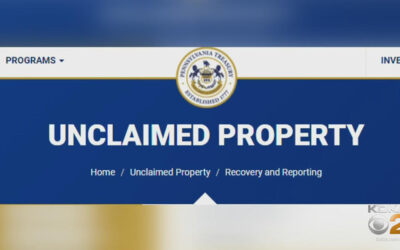Timeshare foreclosure can have a significant impact on your credit report. It’s essential to understand how this situation can affect your credit scores and what steps you can take to remove it. In this article, we will guide you through the process of how to remove timeshare foreclosure from credit report, providing you with a step-by-step approach.
When you face timeshare foreclosure, it means that you were unable to meet the financial obligations associated with your timeshare property. Unfortunately, this can have a negative effect on your credit history. Creditors and lenders look at your credit report to assess your creditworthiness, and a foreclosure can raise concerns about your ability to manage debts. That’s why it is mandatory for you to know how to remove timeshare foreclosure from credit report.
Key Points:
- Timeshare foreclosure can harm your credit report and affect your credit scores.
- We will guide you through the process of removing this entry from your credit report.
- By addressing foreclosure, you can rebuild your credit and regain financial stability.
Impact of Timeshare Foreclosure on Credit Reports
When it comes to your credit report, it’s important to understand how timeshare foreclosure appears and its implications. Here’s what you need to know:
Foreclosure is typically reported as a negative entry on your credit report. It indicates that you failed to meet the financial obligations associated with your timeshare property. This negative mark can stay on your credit report for up to seven years, impacting your creditworthiness.
Lenders and creditors who review your credit report may view timeshare foreclosure as a red flag, raising concerns about your ability to manage debts responsibly. This can affect your chances of obtaining loans, credit cards, or favorable interest rates.
To improve your credit situation, it’s crucial to address foreclosure on your credit report. By understanding how it’s reported and its implications, you can take steps to dispute and remove this entry, giving yourself a better chance at rebuilding your credit.
Key Points:
- Timeshare foreclosure is reported as a negative entry on your credit report.
- It can stay on your report for up to seven years, impacting your creditworthiness.
- Lenders may view timeshare foreclosure negatively, affecting your access to credit.
- Addressing and removing this entry is essential for improving your credit situation.
Read More: How Hard Is It to Sell a Timeshare? Exploring the Realities

How to Remove Timeshare Foreclosure from Credit Report?
Now that you understand the importance of addressing foreclosure on your credit report, let’s walk through the step-by-step process of removing this entry. Follow these guidelines to improve your credit history:
- Review Your Credit Report: Obtain a copy of your credit report from each of the major credit bureaus. Look for the timeshare foreclosure entry and make note of any discrepancies or inaccuracies.
- Gather Supporting Documentation: Collect any supporting documentation that can help strengthen your case. This may include loan agreements, payment records, correspondence with the timeshare company, or any evidence that proves your case.
- Write a Dispute Letter: Craft a well-written dispute letter to the credit reporting agencies. Explain why the timeshare foreclosure entry is incorrect or unfair. Be sure to include your personal information, account details, and the specific reasons why the entry should be removed.
- Send Your Dispute Letter: Mail your dispute letter to each credit reporting agency via certified mail with a return receipt. This ensures that you have proof of your communication.
- Follow Up and Monitor: Keep track of the progress of your dispute. The credit reporting agencies are required to investigate your claim within 30 days. Regularly check for updates on your dispute status.
- Seek Legal Assistance if Needed: If the credit reporting agencies fail to remove the inaccurate timeshare foreclosure entry, you may want to consult a consumer protection attorney who specializes in credit reporting disputes. They can guide you through the legal process and help protect your rights.
- Maintain Good Credit Habits: While working to remove the timeshare foreclosure entry, focus on building a positive credit history. Pay your bills on time, reduce debt, and use credit responsibly. Over time, these habits can improve your creditworthiness.
Read More: Can You Pay Someone to Fix Your Credit? To Pay or Not to Pay?
The Fair Credit Reporting Act (FCRA)
The Fair Credit Reporting Act (FCRA) plays a crucial role in protecting your rights when it comes to your credit report. Understanding its provisions is essential for effectively disputing inaccurate information, including timeshare foreclosure. Here’s what you need to know:
The FCRA grants you the right to dispute any inaccurate or incomplete information on your credit report, including the entry related to timeshare foreclosure. You have the power to request investigations into these entries by the credit reporting agencies.
To initiate the dispute process, obtain a copy of your credit report from each of the three major credit bureaus: Equifax, Experian, and TransUnion. Review the report carefully and identify the timeshare foreclosure entry that you believe to be incorrect.
Once you’ve identified the entry, you can submit a dispute directly to the credit reporting agencies. Provide them with detailed information explaining why you believe the foreclosure entry is inaccurate and request its removal.
The credit reporting agencies are then obligated to investigate your dispute within 30 days and provide you with the results. If they find that the information is indeed incorrect or unverifiable, they must remove it from your credit report.
Key Points:
- The Fair Credit Reporting Act (FCRA) protects your rights when disputing inaccurate information.
- You have the right to request investigations into inaccurate entries, including timeshare foreclosure.
- Obtain your credit report from Equifax, Experian, and TransUnion to identify the incorrect foreclosure entry.
- Submit a detailed dispute to the credit reporting agencies, explaining why the entry is inaccurate.
- The agencies are required to investigate and remove inaccurate or unverifiable information from your report.
You May Also Like: 15 Steps on How to Cancel Timeshare Contract for Free
Gathering Supporting Documentation
When disputing a foreclosure entry on your credit report, it’s important to gather supporting documentation to strengthen your case. Here’s what you need to know:
- Loan Agreements: Locate and collect copies of your timeshare loan agreements. These documents can provide evidence of your payment obligations and help establish your credibility.
- Correspondence: Gather any correspondence you’ve had with the timeshare company, including letters or emails. These communications may contain important information that supports your dispute.
- Payment Records: If you have made payments towards your timeshare, gather records that demonstrate your payment history. Bank statements, receipts, or canceled checks can serve as proof of your financial responsibility.
- Credit Reports: Obtain copies of your credit reports from all three major credit bureaus. Highlight or make notes about any discrepancies or errors related to the timeshare foreclosure entry.
Organization is key. Keep all your documents in a safe place and make copies for your own records. The more compelling evidence you have, the stronger your case will be when disputing the foreclosure entry on your credit report.

Filing Disputes with Credit Bureaus
Once you have gathered the necessary documentation, it’s time to file disputes with the credit bureaus. Here’s how you can initiate the dispute process:
- Identify the Credit Bureaus: Determine which credit bureaus are reporting the timeshare foreclosure entry. It’s important to file disputes with all three major credit bureaus: Equifax, Experian, and TransUnion.
- Online Dispute Submission: Visit the websites of each credit bureau and look for their online dispute submission forms. Fill out the necessary information, including details about the foreclosure entry and the supporting documentation you have gathered.
- Provide Clear Explanation: Clearly explain in the dispute form why the foreclosure entry is inaccurate or unjust. Refer to the documentation you have collected and emphasize how it contradicts the reported information.
- Submit Supporting Documentation: Attach the supporting documentation you gathered to the online dispute form. These documents will provide further evidence for your case.
- Keep Records: Save copies of all the dispute forms and supporting documents for your records. This will help you track your communication and have proof of your dispute submission.
By filing disputes with the credit bureaus, you are initiating an investigation into the accuracy of the foreclosure entry. The credit bureaus are required by law to investigate your claims within 30 days and provide you with the results.
Following Up on Your Dispute
After filing disputes with the credit bureaus, it’s important to follow up on your dispute to ensure its progress. Here’s what you should do:
- Stay Informed: Keep track of the timeline for the credit bureau’s investigation. They are required to provide you with the results within 30 days of receiving your dispute.
- Contact the Credit Bureaus: If the 30-day deadline has passed, reach out to the credit bureaus to inquire about the status of your dispute. You can contact them via phone, email, or through their online portals.
- Document Your Communication: Keep a record of all your communication with the credit bureaus. Note down the dates, names of representatives, and details discussed during your conversations.
- Request Updates: Request updates on the progress of your dispute and ask for any additional information or documentation they may need to complete the investigation.

Rebuilding Your Credit after Timeshare Foreclosure
Once you have successfully removed the timeshare foreclosure entry from your credit report, it’s time to focus on rebuilding your credit. Here are some strategies to help you improve your credit history:
- Pay Bills on Time: Consistently make your payments on time to demonstrate your financial responsibility. Set up automatic payments or reminders to ensure you never miss a payment.
- Reduce Debt: Work on paying down your existing debts. Focus on high-interest debts first and consider consolidating or negotiating with creditors to make repayment more manageable.
- Establish New Credit: Consider obtaining a secured credit card or becoming an authorized user on someone else’s credit card. These strategies can help you establish new credit history and demonstrate responsible credit usage.
- Monitor Your Credit: Regularly review your credit reports to ensure accuracy and identify any potential issues. You can access free credit reports annually from each of the major credit bureaus.
- Seek Professional Guidance: If you need additional assistance, consult with a reputable credit counseling agency. They can provide personalized advice on credit management and help you create a plan for long-term financial success.
The Importance of Reviewing Your Credit Report
Checking your credit report regularly is crucial, especially if you’re dealing with foreclosure. Your credit report contains vital information about your financial history and plays a significant role in determining your creditworthiness. Here’s why reviewing your credit report is essential:
- Identify Errors: Mistakes happen, and inaccuracies on your credit report can negatively impact your credit scores. By reviewing your report, you can catch errors such as incorrectly reported foreclosures or other inaccuracies that could be dragging down your credit.
- Spot Negative Entries: Timeshare foreclosures can linger on your credit report for several years. Regularly checking your report allows you to keep an eye on negative entries and understand their impact on your creditworthiness.
- Take Prompt Action: If you find any errors or inaccurate information, you can take immediate action to dispute them. Timely intervention can help remove unfair negative marks from your credit report.
Conclusion
Removing a timeshare foreclosure from your credit report may require time and effort, but it’s an achievable goal. By following the steps outlined in this guide and remaining persistent, you can repair your credit and pave the way for a brighter financial future. Remember, you’re not alone in this journey, and professional assistance is available if needed. Take the necessary steps today and start rebuilding your credit for a better tomorrow.
FAQs (Frequently Asked Questions)
- What is timeshare foreclosure and how does it impact my credit report?
- Timeshare foreclosure occurs when you fail to meet the financial obligations of your timeshare property. It is reported as a negative entry on your credit report, indicating a failure to manage debts, and can stay on your report for up to seven years.
- How long does a timeshare foreclosure stay on my credit report?
- A timeshare foreclosure can remain on your credit report for up to seven years.
- Why is it important to remove a timeshare foreclosure from my credit report?
- Removing a timeshare foreclosure from your credit report can improve your creditworthiness, increasing your chances of obtaining loans, credit cards, or favorable interest rates.
- How do I start the process of removing a timeshare foreclosure from my credit report?
- Begin by obtaining a copy of your credit report from each major credit bureau. Look for the timeshare foreclosure entry, gather supporting documentation, and write a dispute letter to the credit reporting agencies.
- What kind of supporting documentation should I gather for my dispute?
- Collect loan agreements, payment records, correspondence with the timeshare company, and any evidence that supports your case.
- What role does the Fair Credit Reporting Act (FCRA) play in this process?
- The FCRA grants you the right to dispute any inaccurate or incomplete information on your credit report. It mandates credit reporting agencies to investigate your dispute within 30 days and remove inaccurate or unverifiable information.
- How do I file disputes with credit bureaus?
- Identify which credit bureaus have the foreclosure entry, then submit an online dispute form on their websites. Provide a clear explanation and attach supporting documentation.
- What should I do after filing a dispute with the credit bureaus?
- Monitor the progress of your dispute. If the 30-day deadline passes without a resolution, contact the credit bureaus for an update. Document all communication for your records.
- How can I rebuild my credit after successfully removing a timeshare foreclosure?
- Focus on paying bills on time, reducing debt, establishing new credit, monitoring your credit report, and seeking professional credit counseling if needed.
- Why is it essential to regularly review my credit report?
- Regularly reviewing your credit report helps identify errors, spot negative entries, and take prompt action to dispute inaccuracies, ensuring your creditworthiness is accurately represented.
Mehedi Miraz is the passionate writer behind RealEstateTracer.com. With a love for writing and a fascination for the world of property, Mehedi has honed his expertise through years of dedicated research. His words breathe life into every aspect of the industry, making complex topics simple and enjoyable to explore. Armed with valuable insights, Mehedi is on a mission to share knowledge, empowering readers to navigate the real estate landscape with confidence.






